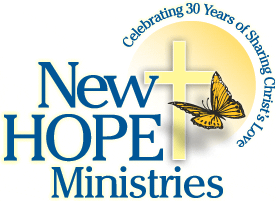Work Samples for Objective 1:
Work Samples for Objective 2:
Work Samples for Objective 3:
Work Samples for Objective 4:
|
|
Learning Objective 1
Objective: To learn how to interact, understand, and develop connections with children/people from different backgrounds than my own.
Resources/Activities:
- Talk to the students in group sharing situations.
- Build individual relationships with each student.
- Share my personal testimony of growing up in a Christian home: Parents have a strong marriage, I had a happy childhood, religion was important in our home, attended a Christian school, and attend a Christian college. Even though my background might be the complete opposite, the purpose is to promote the same happy life for the students and their future children.
- Read 3 articles on challenges faced by the ethnic and socioeconomic backgrounds of the children.
Evaluation/Verification:
- Write down 4 things I learn about each student:
- culture of the student (75% are first generation immigrants from Djibouti, Ethiopia, and Somalia)
- religion that is taught in the home and the degree to which it is implemented (100% of the immigrants are Muslim and the other 25% of the students in program are from non-practicing Christian backgrounds)
- family unit (many of the students are from single-parent homes or from parents who are remarried and have step-siblings)
- socioeconomic status (some of the students’ parents are attending the GED program, going through college, working full-time/part-time, or looking for employment).
These may be factors that will help me to understand the student and be better able to guide them.
- Include a case study of a student who shares and with whom I have built a relationship.
- Summarize research articles and include an annotated bibliography of resources.
Learning Objective 2
Objective: Observe and learn how to present homework and other skills in a variety of ways to best reach the learning style of the student to ensure that each child has the best chance to succeed. Implement a learning discussion using a survey to determine if a student learns best through visual learning styles, auditory learning styles, kinesthetic learning styles, or other learning styles. This can be used to motivate the student with study skills and also with group discussion lesson plans.
Resources/Activities:
- Quiz students with math flash cards on a regular basis. It is important for each student to build a strong foundation with multiplication, division, estimating large numbers, and subtracting large numbers where borrowing is required. The math homework that the students are required to complete is more complex and the foundations for these math problems are holding the student back from wanting to complete the homework at all. The student feels more confident in their homework and quizzes if their math skills foundations are stronger and implemented faster. This will, not only, increase the math grade of the student but it will also motivate the student to work independently and that is the key objective here.
- Research different learning styles.
- Identify the student’s learning style and teach or assist them according to that learning style. Include activities that work for each learning style in portfolio.
- Determine what subject(s) each student struggles with the most and spend more time helping them learn those subjects.
Evaluation/Verification:
- Quicker responses and more correct answers from students on flash cards.
- Define the different learning styles with references. Identify the different learning styles of each student and implement strategies on teaching study skills, group discussions, and application to life goals according to each style and include in portfolio. For the study skills, each student will be divided according to learning styles and given multiple approaches to use that are specifically tailored for them. Visual learning styles will be given worksheets for study skills, DVD for life goals, and You Tube documentary for group discussion. Auditory learning styles will be listening to me speak about study skills, PodCast for life goals, and music tracks for group discussion. Kinestetic learning style students will write out notes for study skills, community service projects for life goals, and interactive games for group discussion.
- Create a document with each child’s learning style and subjects to work on.
Learning Objective 3
Objective: To learn how to appropriately develop lesson plans for bible study, life skills, and tutoring that are catered to the needs of the population and to learning disabilities.
Resources/Activities:
- Talk to site supervisor about current lesson plans and/or themes in order to best plan lessons.
- Determine which age group(s) I will be teaching.
- Identify needs of the population (ethnic, socioeconomic, and religious) and learning disabilities before planning lessons.
- Research characteristics and ways to teach the population and plan lessons accordingly.
- Teach lessons.
Evaluation/Verification:
- Summarize research on population and disability needs with resources.
- Include copies of lesson plans in portfolio.
Learning Objective 4
Objective: To create an environment that centers on Christ and builds character in children who do not hear about Christ on a regular basis.
Resources/Activities:
- Research ways to teach children about God.
- Use books and internet resources to find meaningful lessons for each age group.
- Share my faith journey and invite questions from the students.
- Develop a relationship with each child that centers on Christ.
- Encourage participation and participate myself in group sharing, prayer requests, and prayer.
- Strive to be a good Christian role model for the students in the program.
Evaluation/Verification:
- Summarize research findings with resources.
- Include lessons in portfolio.
- Write down what I share about my journey, as well as any questions or responses from the students. I will also include how my own journey has been affected by this experience.
|
